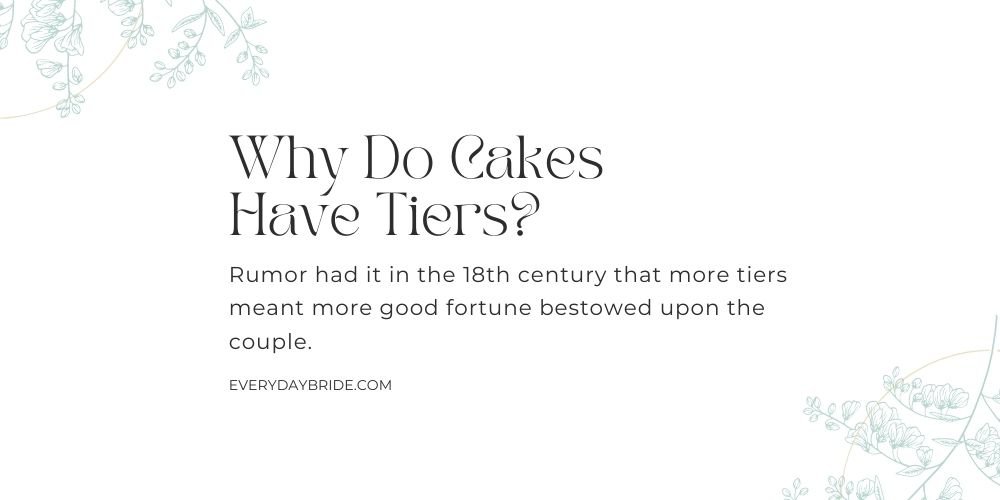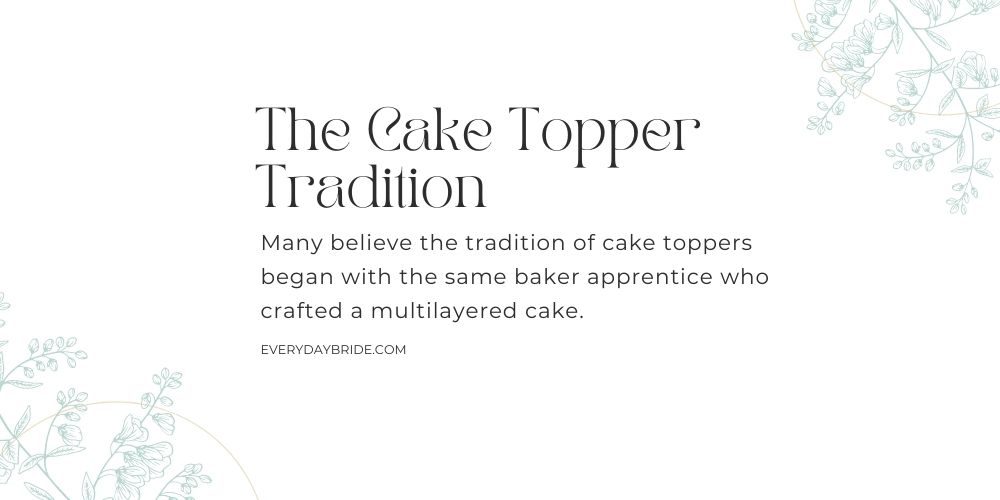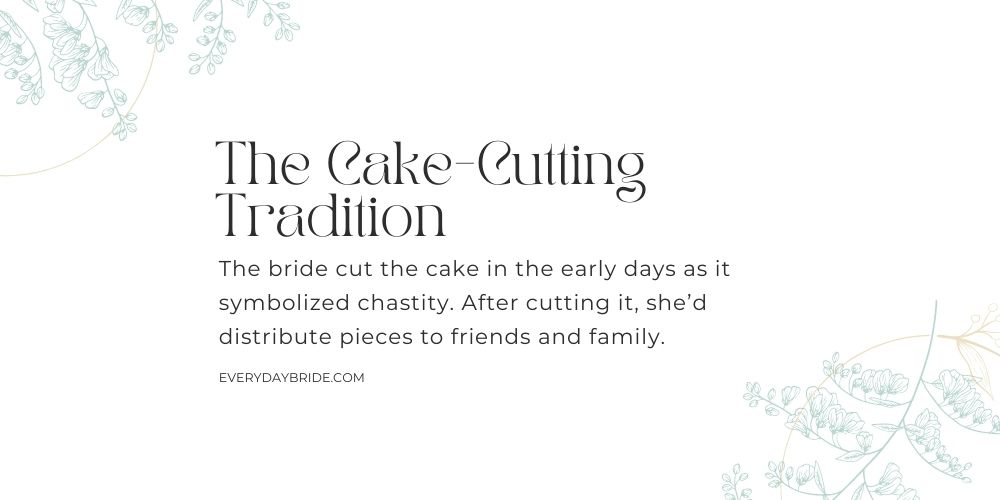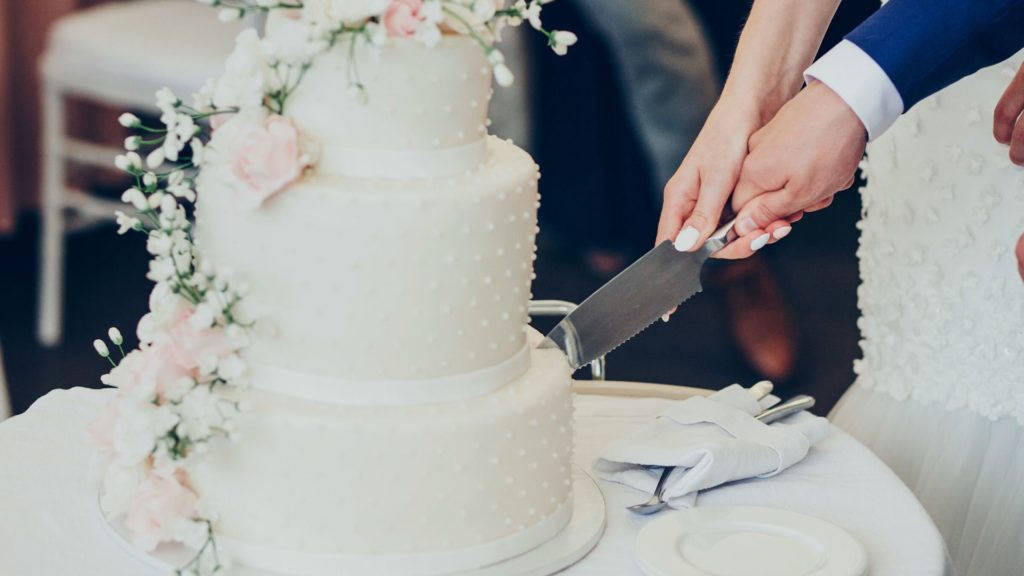Ever wonder why most wedding cakes have several tiers or why cutting the first slice is such a ceremonious event? Weddings include various age-old traditions, all centered around a virtuous life for the couple. Check out this complete guide to traditional wedding cakes to learn about these rituals, plus some bonus facts on choosing your dessert!
Why Are Wedding Cakes Traditional?
A big, beautiful cake is a sight to see and the most common dessert served at weddings. Like many wedding traditions, eating cake goes back centuries—all the way back to ancient Greece and Rome. Back then, the cake symbolized the bride’s vow to her husband and good luck to the couple.
In those days, it wasn’t a delicious cake with sweet frosting that guests and the couple would enjoy after dinner. Instead, the groom would break a wheat or barley cake over the bride’s head. Then, in some traditions, the couple would eat the crumbs that fell to further ensure their marriage flourished.
By the 16th century, this “cake” became a bridal pie filled with oysters, pine kernels, and some unsavory parts of a lamb. Luckily, this didn’t stick around, and society instead gravitated toward fruitcake. However, over the years, our taste for desserts continued to develop, and eventually, we had cakes as sweet as the couple’s love.
What’s a Groom’s Cake?
Shortly after weddings began serving fruitcakes, the groom’s cake came about. There’s a lot to know about a groom’s cake, so let’s start with the beginning. The original pastries were fruitcakes, and couples began serving them in the Victorian era. While guests would enjoy the bridal cake at the wedding, most took a slice of the groom’s cake home as a favor.

Why Do Cakes Have Tiers?
One aspect that makes wedding cakes look so elegant is their many tiers. Rumor had it in the 18th century that more tiers meant more good fortune bestowed upon the couple. This was especially true if the newlyweds could kiss over a tall cake.
An elegant wedding cake also symbolized wealth because even back then, these desserts were pricy! In fact, according to wedding legend, this tradition started because a baker’s apprentice fell in love with his boss’s daughter and knew a unique cake would wow everyone.
The Three Tiers
Although your wedding cake can have as many levels as the baker can stack for you, tradition says there are three. Couples would save the top tier for their first child’s christening, which wasn’t long after the wedding in the 19th century. Guests would enjoy the middle layer after the event and the bottom during the ceremony.
Preserving Your Cake
Nowadays, many couples preserve the top layer of their cake to enjoy on their first wedding anniversary. To do this, follow the steps below:
- Carefully cover the entire cake in several layers of plastic wrap.
- When wrapping, ensure there are no air bubbles, as this will dry out the cake.
- Add two layers of aluminum foil to the cake for extra protection.
- Store the cake in a Pyrex container or other freezer-safe food container.
Most bakers recommend taking the cake out of the freezer on the morning of your anniversary so it dethaws. Typically, it’ll take at least two hours for the cake to reach room temperature. Pulling it out the morning of your anniversary ensures your dessert tastes incredible when you enjoy it that evening.

The Cake Topper Tradition
Couples have placed toppers on their wedding cakes for several centuries, and this is a great way to personalize the sweet treat you serve. Many believe the tradition of cake toppers began with the same baker apprentice who crafted a multilayered cake. The impressive cake worked, as we still serve multilayered cakes with toppers today.
Deciding on Your Topper
There are various toppers to choose from. Some prefer a ceramic couple to symbolize themselves, but others top their cake with a heart. Other great toppers include:
- Your last name initial
- A short, romantic phrase
- Mr. and Mrs.
- Flowers
- Lovebirds
You could also have a ceramic or wood carving of a special interest. If you both love animals or have a pet, you could top the cake with a figurine of your pet.

The Cake-Cutting Tradition
The cake-cutting is a fun wedding tradition that keeps all eyes on the couple. Relatives coo and take photos as you and your honey cut into that first slice and enjoy the delicacy. Like many wedding traditions, this one dates back several centuries—all the way to the Victorian era. Only the bride cut the cake in the early days as it symbolized chastity. After cutting it, she’d distribute pieces to friends and family.
After cutting the cake, the couple usually feeds one another a piece as a sign of love for one another. This shows that you’re a team prepared to share life’s sweetness as a unit.
Bridal Tip
The “cake smash” is a tradition of unknown origin followed by some couples. If you decide to do this, note the dos and don’ts of cake smashing. Both partners should agree to do this. No one wants to spend hours getting ready only for the cake to get smashed in their face. This can feel even more irritating when you expect your partner to carefully feed you a bite. When planned, cake smashing is fun for all participants and a great laugh for your guests.
Picking Your Perfect Cake
Now that we’ve covered traditional wedding cakes, let’s dive into a complete guide on picking yours. First, decide how many layers you want to have. You could do three, like many newlyweds, or have an extravagant cake tower.
To ease the process, search for local bakers. Talk with your venue manager or wedding planner to see if they have any recommendations. Also, talk with newly married friends or relatives to see who they hire. Schedule a cake tasting with several bakers to sample various flavors; every baker has a different skill level and trying several ensures you hire the best.
Tips for Picking a Baker
The taste of the cake helps you decide who to hire, but you should also evaluate price and ability. Talk with the professional about what types of design they can do—ask to view their portfolio. You can also get inspiration for cake ideas from Pinterest. If you find a plan you love, show it to the baker and see if they could do something similar.
Wedding cakes can get expensive, and you must ensure the baker you hire fits your budget. Talk about prices and take note of each baker’s response so you can easily weigh the pros and cons of your options. You may have to sacrifice certain design elements to keep the best baker within your price point.
Cake Sampling Tips
Cake tasting is one of the best parts of wedding planning. Who doesn’t love dedicating hours to trying incredible cakes? Try to keep the sampling to you and your partner to avoid getting too many opinions.
Other tips for cake sampling include:
- Never show up hungry—you may overindulge in the cake.
- Drink water between flavors—this cleanses your palate so you don’t mix flavors.
- Keep your mind open—taste various cake and icing flavors.
As you taste your options, keep a pen and paper handy so you and your partner can jot down your top contenders. If you and your partner fall in love with different flavors, you could have two cakes or make each layer of the cake different. What’s most important is that both of you enjoy the delicacy.
A Closing Note: Skipping Tradition
Cake isn’t your thing? No problem! Your wedding is your day; no matter what anyone says, you make the rules. You could serve a pie, have a sweets bar, or have an array of cookies. Ultimately, guests will be happy with whatever you offer them—well, unless it’s a 16th-century bride’s pie. All jokes aside, think of a sweet treat you, your partner, and your guests will enjoy.
Always serve what you two like most. Enjoy all those sweet samples as you decide what to have at your wedding!


